 By Natasha Ponomaroff
By Natasha Ponomaroff
We’ve seen the rise of social-media centered marketing, and a large part of that is visual content. An effective visual content marketing strategy not only drives traffic to your website but also creates trust and introduces yourself to your audience. It’s one of the biggest building blocks of your company’s online identity.
Why? A full two-thirds of people say they’re visual learners, and 90% of information that the brain processes is visual. People naturally value images over almost all other forms of content; a picture really is worth a thousand words. As a result, good visual content—relevant imagery that really captures your brand’s identity and message—garners 94% more views.
So how then do you turn views into traffic leading to your website? Read on and learn from these high-performing brands.
Instagram has become, by far, one of the most popular social media networks. There’s very limited space for text, so everything goes into the meat of the experience: images and video. It’s a fantastic sales channel, too: 30% of active users have bought an item they first spotted on Instagram.
Because it’s so focused on visual content, the users have become increasingly discerning about what they like. There are lots of things to avoid doing on Instagram. Your brand has a real risk of getting lost in the scrum. So what’s the right play?
Consistency—being able to deliver solid, engaging content day after day, post after post is eventually going to catch people’s attention. So first off: pick a signature aesthetic and color story. Begin with good photos and edit them to be on-brand. Instasize is a good tool to start with: it’s got everything you need to develop your brand’s visual content language. Once you’ve done that, getting people to hop over to your website should be a cinch.
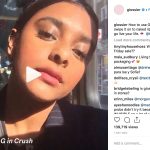
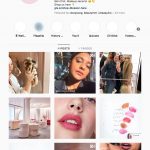 Check out how Glossier does their content on Instagram: scroll through their content and you’ll find that their page beautifully captures their signature pink color through the posts they share.
Check out how Glossier does their content on Instagram: scroll through their content and you’ll find that their page beautifully captures their signature pink color through the posts they share.
Aside from that, they also feature a lot of real people by reposting images of their followers and brand enthusiasts. This is great because using real people makes for authentic content, one that’s most likely to get their audience heading to their site to shop for products. Take a page from Glossier’s playbook and try to connect with your audience that way.
The Instagram community likes its square images or vertical video, owing to the design of the app. Facebook has its own content preferences as well. You can go with videos or longer-form blog posts. There’s a lot more room for it, so tailor your content to fit the platform.
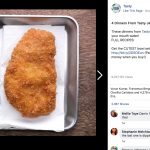 Facebook is decent at presenting short video content, and it’s a great sharing platform for it as well. Just check out how Tasty has leveraged on this by posting all their foodie episodes on Facebook.
Facebook is decent at presenting short video content, and it’s a great sharing platform for it as well. Just check out how Tasty has leveraged on this by posting all their foodie episodes on Facebook.

Because engagement is high for these kinds of posts, Tasty’s subscriber count has reached 95 million, with each episode hitting hundreds of millions of views as well. To lead to site, they caption each cooking video with a link to their site for full recipes.
Third place in the big three of social networks, Twitter is like the belligerent upstart behind its more distinguished siblings. People think it’s primarily a platform for text content (especially since they themselves made such a fuss over their character limit), but visual content is still really important here.
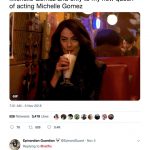 Netflix leverages on this by including images with almost all of its tweets, usually in the form of hilarious images and memes or fun behind-the-scenes shots and clips of their featured shows or films.
Netflix leverages on this by including images with almost all of its tweets, usually in the form of hilarious images and memes or fun behind-the-scenes shots and clips of their featured shows or films.
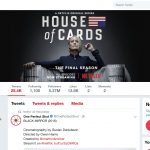 Twitter is a social network that is handled best with a content one-two punch. Draw them in with an image or video with a strong focal point. Bring your audience’s eyes to your tweet, because each individual tweet can’t take up that much space in the app. Once they’re looking, serve up some well-written, clever text content. Don’t forget to link to your site whenever possible.
Twitter is a social network that is handled best with a content one-two punch. Draw them in with an image or video with a strong focal point. Bring your audience’s eyes to your tweet, because each individual tweet can’t take up that much space in the app. Once they’re looking, serve up some well-written, clever text content. Don’t forget to link to your site whenever possible.
For Pinterest you’re actually going to want to add more text than you think. Yes, it’s primarily an image-sharing social network, but at the same time it’s meant to be helpful. Taking the time to add even a short description of what you’re sharing and why you’re sharing it will pays in the long run.
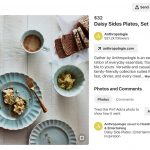
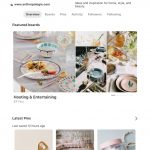 Retail company Anthropologie makes the most out of people’s habit of visiting Pinterest to look various pegs (be it for clothing or house decor) by sharing beautifully shot photos of their products, short descriptions, as well as a link-out option that leads to their online store.
Retail company Anthropologie makes the most out of people’s habit of visiting Pinterest to look various pegs (be it for clothing or house decor) by sharing beautifully shot photos of their products, short descriptions, as well as a link-out option that leads to their online store.
Conclusion
With all of these social networks we always have to keep our goal in mind: getting people interested and getting them to identify with your brand. Using these tips strategically can ensure that your visual content hits with the maximum impact.
Driving traffic to your website is just the beginning. Getting people to go out of their way to promote your message? Increasing awareness of a particular advocacy or charity? That’s all eminently doable. What matters is that you consistently deliver your visual content with care and authenticity. Remember your message and stay on-brand, and you’ll soon rise above the rest of the social media clutter.
________
Natasha Ponomaroff is the Senior Marketing Director of Instasize – a content creating tool kit for anyone editing photos and online content on mobile. A weekly contributor on the site’s blog, Natasha tracks social media trends and updates the millions of creatives who are currently using Instasize to curate awesome online content. When she isn’t writing up the latest trend, Natasha is overseeing a team of 10 over at the Instasize HQ – ensuring that the marketing content on the apps various social platforms is ready to go.
